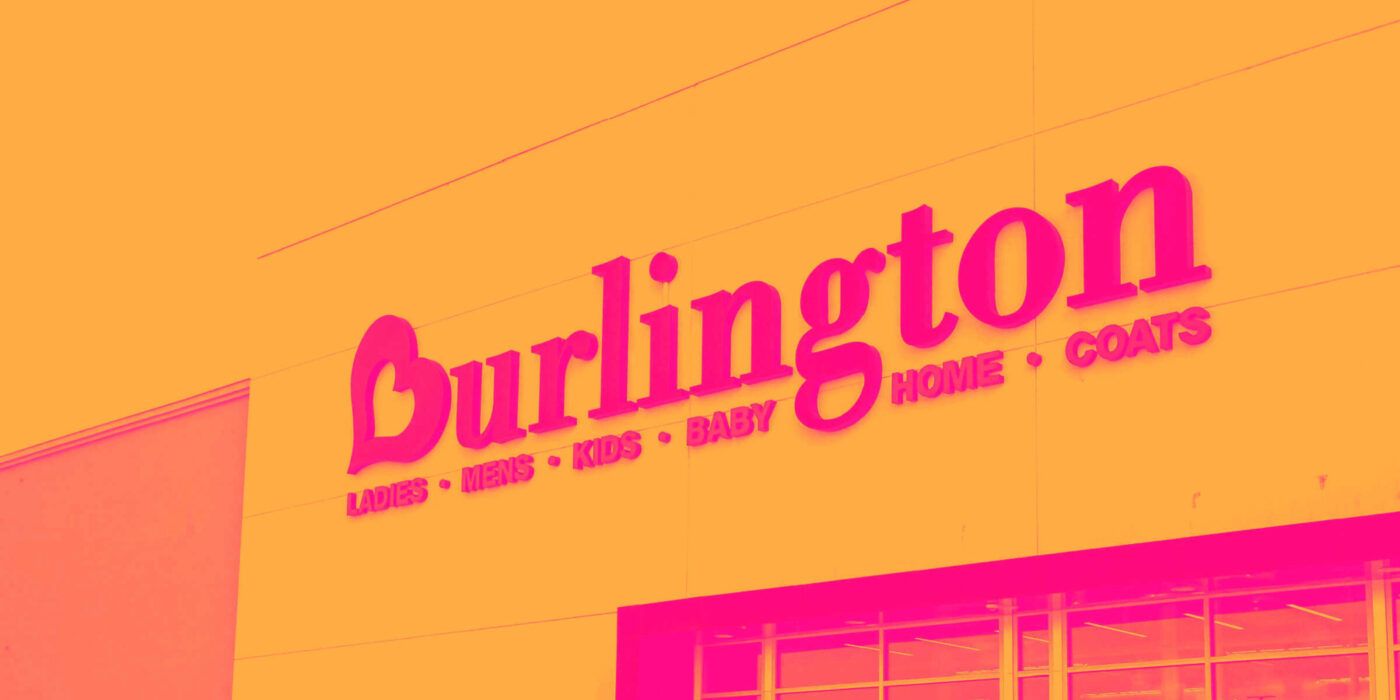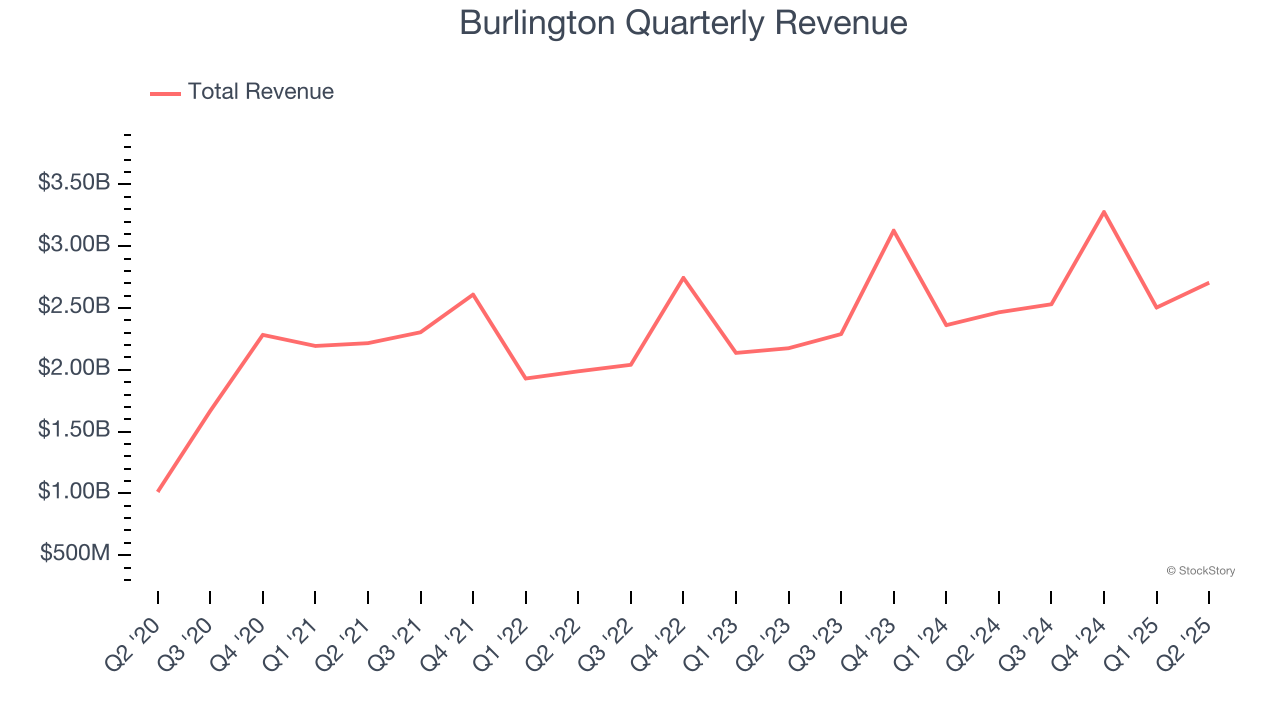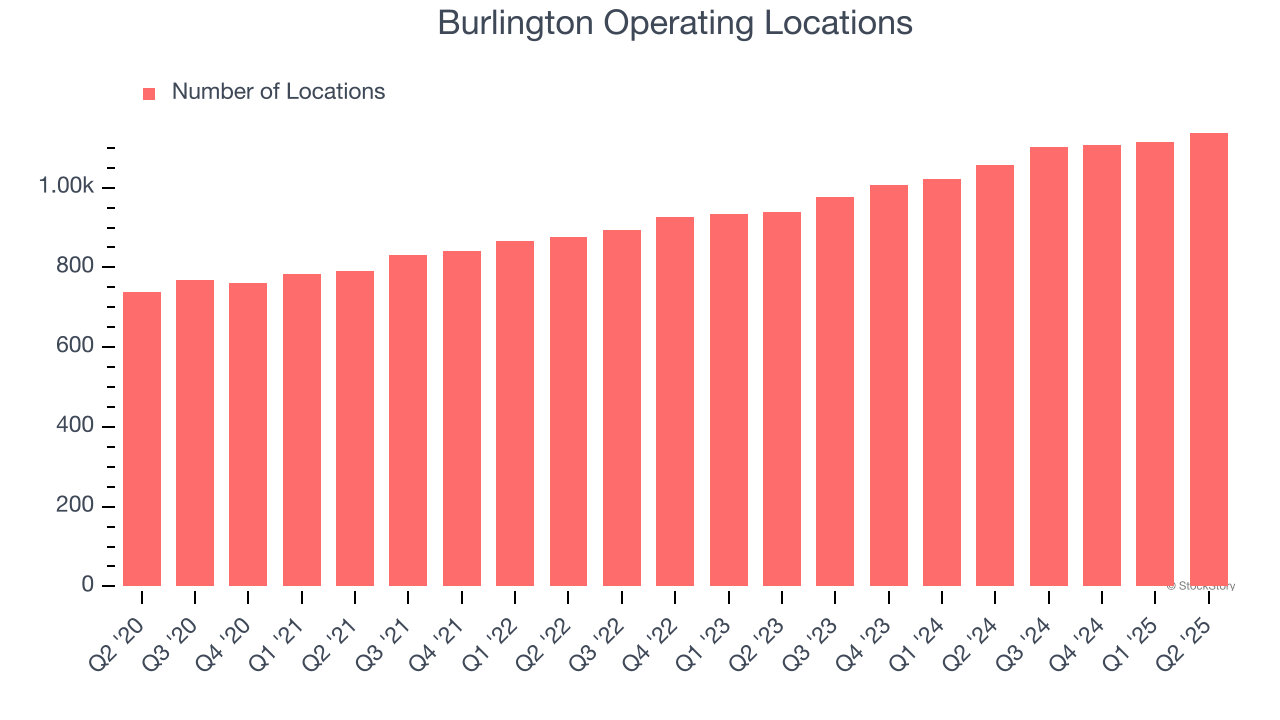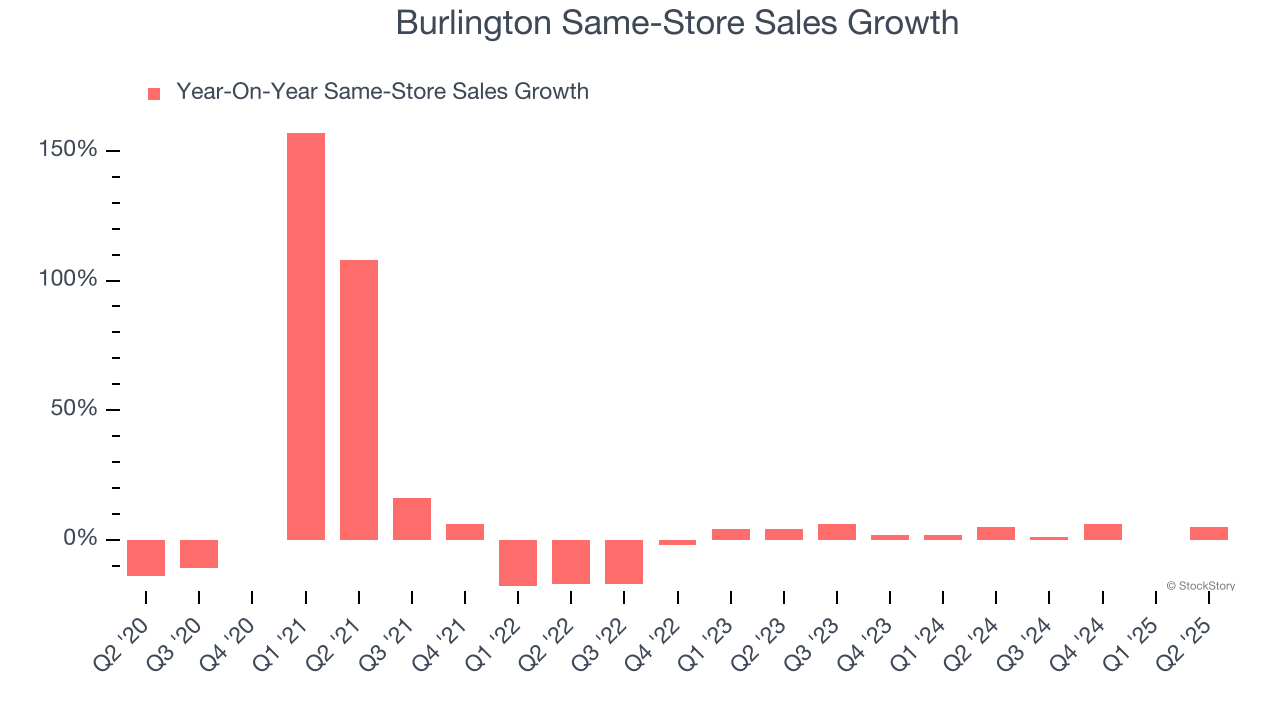
Off-price retail company Burlington Stores (NYSE:BURL) reported Q2 CY2025 results beating Wall Street’s revenue expectations, with sales up 9.7% year on year to $2.71 billion. On the other hand, next quarter’s revenue guidance of $2.68 billion was less impressive, coming in 2.1% below analysts’ estimates. Its non-GAAP profit of $1.72 per share was 33.1% above analysts’ consensus estimates.
Is now the time to buy Burlington? Find out by accessing our full research report, it’s free.
Burlington (BURL) Q2 CY2025 Highlights:
- Revenue: $2.71 billion vs analyst estimates of $2.64 billion (9.7% year-on-year growth, 2.5% beat)
- Adjusted EPS: $1.72 vs analyst estimates of $1.29 (33.1% beat)
- Adjusted EBITDA: $245.7 million vs analyst estimates of $214.7 million (9.1% margin, 14.4% beat)
- Revenue Guidance for Q3 CY2025 is $2.68 billion at the midpoint, below analyst estimates of $2.74 billion
- Management raised its full-year Adjusted EPS guidance to $9.39 at the midpoint, a 4.3% increase
- Operating Margin: 8.7%, up from 4.7% in the same quarter last year
- Free Cash Flow was -$101,000 compared to -$35.17 million in the same quarter last year
- Locations: 1,138 at quarter end, up from 1,057 in the same quarter last year
- Same-Store Sales rose 5% year on year, in line with the same quarter last year
- Market Capitalization: $17.47 billion
Michael O’Sullivan, CEO, stated, “We are pleased with our exceptional performance in the second quarter. Comparable store sales increased 5%, which was on top of 5% comparable store sales growth in the second quarter of last year. We also saw very strong margin and earnings performance. Adjusted EBIT Margin increased 120 basis points, while Adjusted EPS grew 39% versus the second quarter of last year. This was a high-quality earnings beat driven by ahead of plan sales, higher merchandise margin, lower freight expense and leverage on SG&A expenses.”
Company Overview
Founded in 1972 as a discount coat and outerwear retailer, Burlington Stores (NYSE:BURL) is now an off-price retailer that has broadened into general apparel, footwear, and home goods.
Revenue Growth
Reviewing a company’s long-term sales performance reveals insights into its quality. Any business can have short-term success, but a top-tier one grows for years.
With $11.02 billion in revenue over the past 12 months, Burlington is a mid-sized retailer, which sometimes brings disadvantages compared to larger competitors benefiting from better economies of scale.
As you can see below, Burlington’s sales grew at a mediocre 8% compounded annual growth rate over the last six years (we compare to 2019 to normalize for COVID-19 impacts), but to its credit, it opened new stores and increased sales at existing, established locations.

This quarter, Burlington reported year-on-year revenue growth of 9.7%, and its $2.71 billion of revenue exceeded Wall Street’s estimates by 2.5%. Company management is currently guiding for a 6% year-on-year increase in sales next quarter.
Looking further ahead, sell-side analysts expect revenue to grow 8.6% over the next 12 months, similar to its six-year rate. This projection is particularly noteworthy for a company of its scale and suggests the market is baking in success for its products.
Today’s young investors won’t have read the timeless lessons in Gorilla Game: Picking Winners In High Technology because it was written more than 20 years ago when Microsoft and Apple were first establishing their supremacy. But if we apply the same principles, then enterprise software stocks leveraging their own generative AI capabilities may well be the Gorillas of the future. So, in that spirit, we are excited to present our Special Free Report on a profitable, fast-growing enterprise software stock that is already riding the automation wave and looking to catch the generative AI next.
Store Performance
Number of Stores
Burlington operated 1,138 locations in the latest quarter. It has opened new stores at a rapid clip over the last two years, averaging 10% annual growth, much faster than the broader consumer retail sector. This gives it a chance to become a large, scaled business over time.
When a retailer opens new stores, it usually means it’s investing for growth because demand is greater than supply, especially in areas where consumers may not have a store within reasonable driving distance.

Same-Store Sales
A company's store base only paints one part of the picture. When demand is high, it makes sense to open more. But when demand is low, it’s prudent to close some locations and use the money in other ways. Same-store sales is an industry measure of whether revenue is growing at those existing stores and is driven by customer visits (often called traffic) and the average spending per customer (ticket).
Burlington’s demand has been spectacular for a retailer over the last two years. On average, the company has increased its same-store sales by an impressive 3.4% per year. This performance suggests its rollout of new stores is beneficial for shareholders. We like this backdrop because it gives Burlington multiple ways to win: revenue growth can come from new stores, e-commerce, or increased foot traffic and higher sales per customer at existing locations.

In the latest quarter, Burlington’s same-store sales rose 5% year on year. This growth was an acceleration from its historical levels, which is always an encouraging sign.
Key Takeaways from Burlington’s Q2 Results
It was good to see Burlington beat analysts’ EPS expectations this quarter. We were also excited its EBITDA outperformed Wall Street’s estimates by a wide margin. On the other hand, its EPS guidance for next quarter missed and its revenue guidance for next quarter fell short of Wall Street’s estimates. Overall, this print was mixed but still had some key positives. The stock traded up 8.8% to $305 immediately after reporting.
Burlington put up rock-solid earnings, but one quarter doesn’t necessarily make the stock a buy. Let’s see if this is a good investment. When making that decision, it’s important to consider its valuation, business qualities, as well as what has happened in the latest quarter. We cover that in our actionable full research report which you can read here, it’s free.
